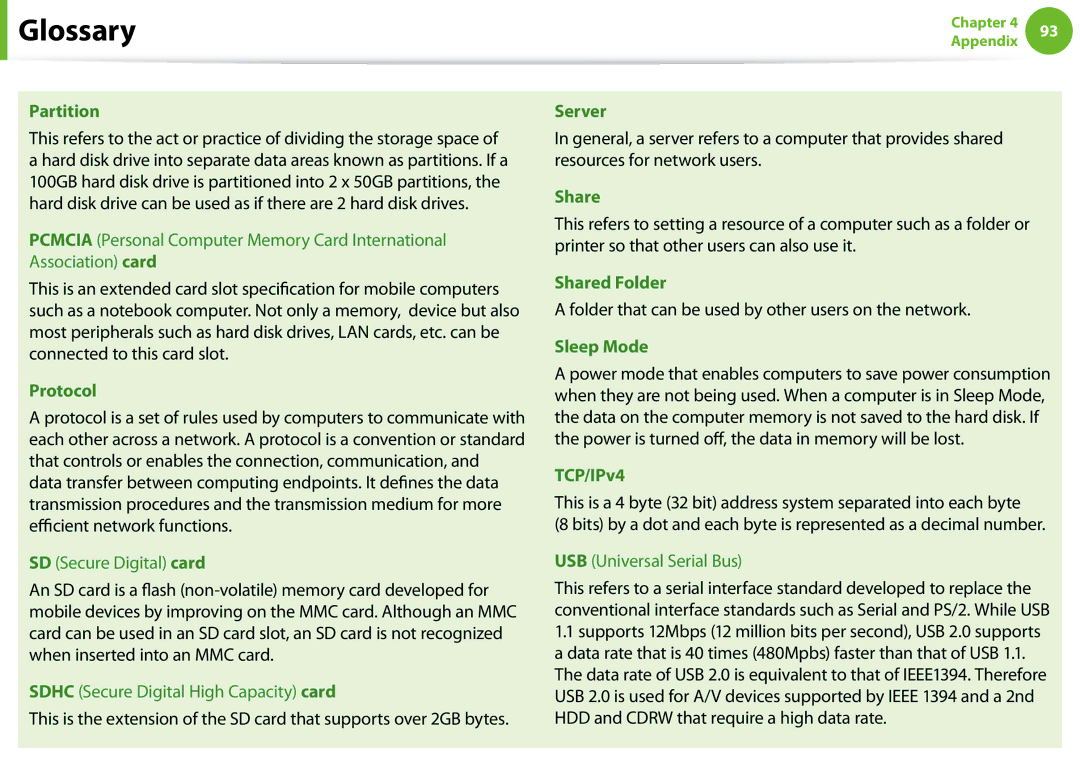
 Glossary
Glossary
Partition
This refers to the act or practice of dividing the storage space of a hard disk drive into separate data areas known as partitions. If a 100GB hard disk drive is partitioned into 2 x 50GB partitions, the hard disk drive can be used as if there are 2 hard disk drives.
PCMCIA (Personal Computer Memory Card International Association) card
This is an extended card slot specification for mobile computers such as a notebook computer. Not only a memory, device but also most peripherals such as hard disk drives, LAN cards, etc. can be connected to this card slot.
Protocol
A protocol is a set of rules used by computers to communicate with each other across a network. A protocol is a convention or standard that controls or enables the connection, communication, and data transfer between computing endpoints. It defines the data transmission procedures and the transmission medium for more efficient network functions.
SD (Secure Digital) card
An SD card is a flash
SDHC (Secure Digital High Capacity) card
This is the extension of the SD card that supports over 2GB bytes.
Chapter 4 | 93 | |
Appendix | ||
|
Server
In general, a server refers to a computer that provides shared resources for network users.
Share
This refers to setting a resource of a computer such as a folder or printer so that other users can also use it.
Shared Folder
A folder that can be used by other users on the network.
Sleep Mode
A power mode that enables computers to save power consumption when they are not being used. When a computer is in Sleep Mode, the data on the computer memory is not saved to the hard disk. If the power is turned off, the data in memory will be lost.
TCP/IPv4
This is a 4 byte (32 bit) address system separated into each byte
(8 bits) by a dot and each byte is represented as a decimal number.
USB (Universal Serial Bus)
This refers to a serial interface standard developed to replace the conventional interface standards such as Serial and PS/2. While USB
1.1supports 12Mbps (12 million bits per second), USB 2.0 supports a data rate that is 40 times (480Mpbs) faster than that of USB 1.1. The data rate of USB 2.0 is equivalent to that of IEEE1394. Therefore USB 2.0 is used for A/V devices supported by IEEE 1394 and a 2nd HDD and CDRW that require a high data rate.
